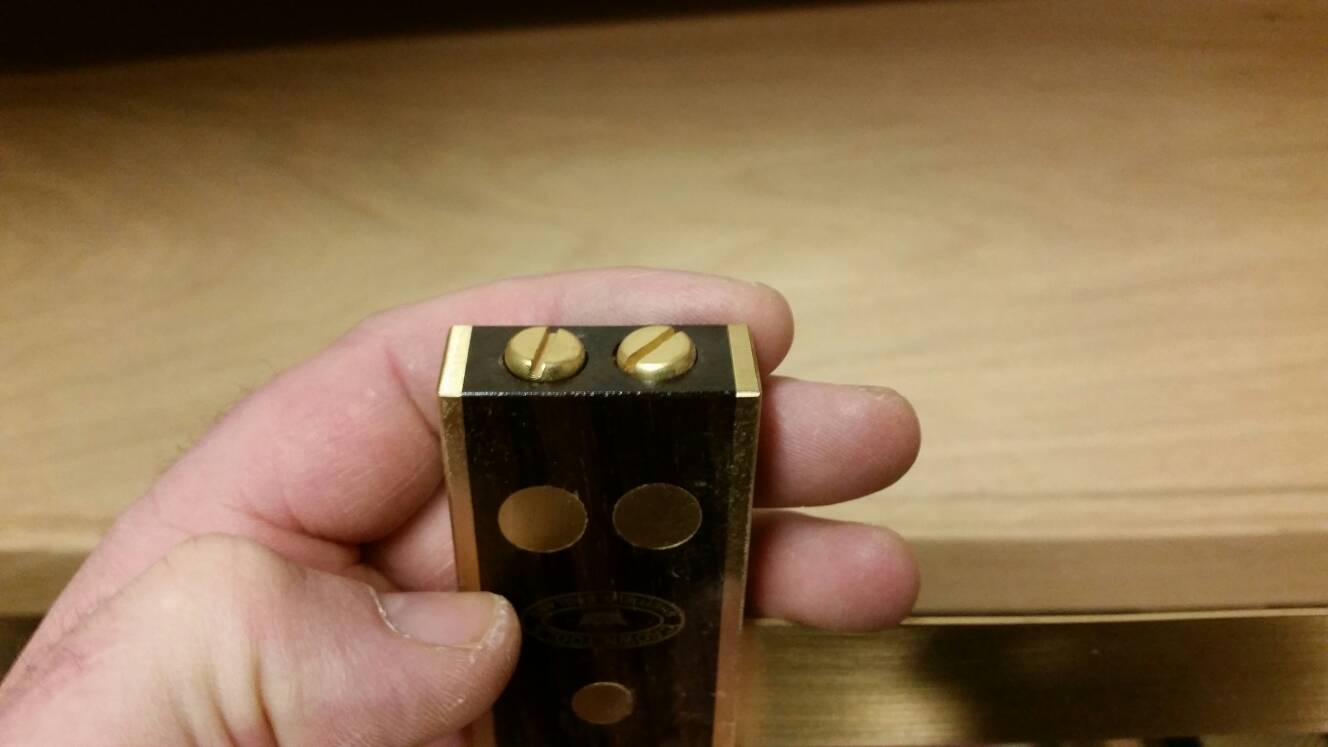To my mind the ideal square is adjustable, and has a push-out slip, the same thickness as the blade, near the end of the stock. This slip avoids the problem mentioned by Custard, of a heavier square rocking. The figure shows a Bridge City square to this design. I bought a set of three of these when I worked in the USA (when they were cheaper and I had more money!) and use them all the time. This model is not relevant now, as it has been discontinued (and BC prices are now ludicrous though they are beautiful tools!), but maybe someone knows an equivalent, or will be inspired to make their own to this design?
Note the support slip in the bottom left of this square.
The slip of wood at the top of the square is a shallow wedge, to ensure that the weight of the blade does not rock the square while setting.
For setting, one can use the straight edge and flip square method, but I never find this very good. First one has to make sure the edge is really straight. Then you can only use it a few times before there are so many lines that they are indistinguishable. I use a four-sided jig that magnifies the error by four, and is self-calibrating (as four right angles is a complete circle). I estimate the accuracy is about 0.003 degrees (10 seconds of arc).
The pictures show two of the squares with my high accuracy square setting jig, which I trot out whenever the subject of squares comes up:
high-accuracy-square-setting-jig-t93871.html. Apologies to those who are bored by seeing this!
I made this out of wood because I wanted to practice making the sides square and straight, and had some 150 year old teak to use. It would be quicker, probably more accurate, and more sensible to use aluminium extrusion, e.g. T-track or 2030 extrusion (checked for straightness by ensuring that any three of the side pieces will match with no gaps).
The jig lives on the workshop wall and can be used to check a square in a few seconds. I do this whenever starting a new project. It will handle combination squares. There are obvious modifications one can make to handle T-squares or inside squares.
The same principle can be used for 45 degree angles, but needs eight sides and gets a bit fussy!
Keith










